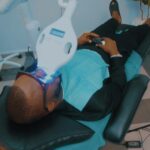LED lights are celebrated for their longevity and efficiency, often lasting thousands of hours longer than traditional incandescent bulbs. While they are built for durability, you can take several steps to ensure you get the maximum lifespan from your investment. Proper care and handling not only lead to long-lasting lights but also contribute to consistent performance and energy savings over time.
Understanding the factors that affect LED longevity is the first step toward effective maintenance. From the operating temperature to the quality of the power supply, various elements can influence how long your lights will perform optimally.
This guide will walk you through practical strategies for LED maintenance. We’ll cover everything from ensuring proper ventilation and using the correct voltage to performing routine cleaning and inspections. By implementing these tips, you can significantly extend the life of your LED lighting systems, reduce replacement costs, and enjoy reliable, high-quality light for years to come.
Ensure Proper Ventilation and Heat Management
One of the most critical factors affecting the lifespan of an LED is heat. Unlike incandescent bulbs that are designed to withstand high temperatures, LEDs are sensitive to heat. Excessive heat can degrade the electronic components within the light, leading to a shorter lifespan and reduced brightness.
Keep Fixtures Clear
- Avoid Enclosed Fixtures: Placing LED bulbs in fully enclosed fixtures can trap heat, causing the bulb to overheat. If you must use an enclosed fixture, look for LEDs specifically rated for this use.
- Provide Airflow: Ensure there is adequate space around the LED fixture for air to circulate. This helps dissipate heat naturally and keeps the components cool.
- Check Installation Guidelines: Always follow the manufacturer’s instructions regarding spacing and installation to prevent heat buildup.
Use the Correct Voltage and Power Supply
Supplying your LED lights with the correct voltage is fundamental to their longevity. An incompatible power supply can cause irreversible damage to the sensitive electronics inside the LED.
Match Voltage Requirements
- Check the Label: Before installation, always verify the voltage requirements printed on the LED bulb or fixture. Common voltages for residential use are 120V in North America, while some systems use low voltage (12V or 24V).
- Use High-Quality Drivers: The driver is the component that regulates the power flowing to the LED. A high-quality, compatible driver ensures a stable current, protecting the LED from power fluctuations that can shorten its life. Using a cheap or mismatched driver can lead to flickering, overheating, and premature failure.
Limit On/Off Cycling
While LEDs are more resilient to frequent switching than fluorescent lights, constantly turning them on and off can still have an impact over time. Each time a light is switched on, the components experience a small amount of stress.
Smart Usage Practices
- Use Motion Sensors or Timers: For areas where lights are needed intermittently, such as hallways or storage rooms, using motion sensors or timers can reduce unnecessary on/off cycles.
- Consolidate Use: Try to turn lights on for longer periods rather than flicking them on and off for short intervals. This small change in habit can contribute to the overall health of your lighting system.
Perform Regular Cleaning and Inspection
Dust and debris can accumulate on LED fixtures over time, which can insulate the components and trap heat. A simple cleaning routine can make a significant difference in performance and lifespan.
Maintenance and Pixel Repair
- Dusting: Regularly wipe down your LED bulbs and fixtures with a soft, dry cloth to remove dust. This simple step improves heat dissipation.
- Inspection: Periodically check your lights for any signs of wear, such as flickering or dimming. For more complex systems like LED displays or strips, you might need to check for individual non-working diodes. Addressing small issues early, such as a simple pixel repair, can prevent more significant problems from developing.
- Professional Checks: For large-scale or commercial installations, consider scheduling professional LED Maintenance checks to ensure the entire system is functioning correctly.
Protect Against Power Surges
Power surges, which are sudden spikes in electrical voltage, can be highly damaging to sensitive electronic devices, including LED lights. While a single surge might not cause immediate failure, repeated exposure can degrade components and shorten the lifespan of your lights.
Implement Surge Protection
- Surge Protectors: Plug your LED fixtures or the entire lighting circuit into a surge protector. This is especially important for expensive or complex LED systems.
- Whole-House Protection: Consider installing a whole-house surge protector, which is connected to your main electrical panel. This provides a broader level of protection for all your electronic devices, including your lighting.
Choose Quality Products from Reputable Brands
The initial quality of your LED lights plays a massive role in how long they will last. Cheaper, unbranded options may seem like a good deal initially, but they often use lower-quality components that are more prone to failure.
Invest in Reliability
- Look for Certifications: Choose products that have been tested and certified by recognized organizations, such as UL (Underwriters Laboratories) or ENERGY STAR®. These certifications indicate that the product meets specific safety and performance standards.
- Read Reviews: Check customer reviews and ratings before purchasing. Real-world user experiences can provide valuable insight into the reliability and longevity of a product.
- Consider the Warranty: A longer warranty period often reflects the manufacturer’s confidence in their product’s durability.
Your Path to Long-Lasting Lights
By implementing these straightforward maintenance and usage strategies, you can significantly extend the operational life of your LED lighting. Proper heat management, using compatible power supplies, mindful usage, and regular cleaning are all key components of a successful LED Maintenance plan. These practices not only help you achieve long-lasting lights but also maximize your energy savings and reduce the need for frequent replacements.
Investing in quality products from the start and protecting them from power surges will further safeguard your lighting system. Taking these proactive steps ensures you get the most value and performance from your LEDs for many years to come.













